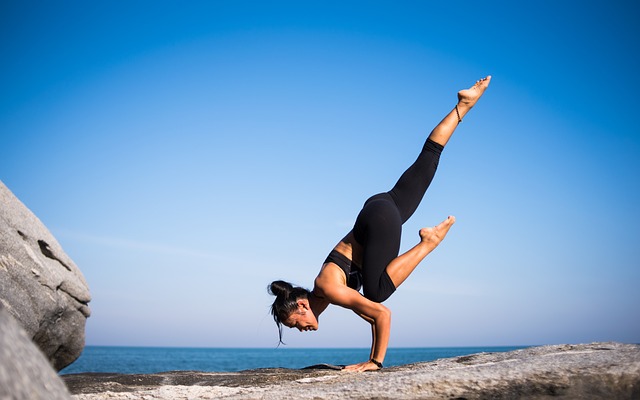Yoga, an ancient practice originating in India, has evolved into a global phenomenon renowned for its physical, mental, and spiritual benefits. This comprehensive article delves into the rich history of yoga, explores its diverse benefits, discusses various yoga techniques and styles, and examines its integration into modern lifestyles.
Introduction to Yoga
Yoga is a holistic discipline that combines physical postures (asanas), breathing exercises (pranayama), meditation, and philosophical teachings to promote overall well-being. Rooted in ancient Indian traditions, yoga emphasizes harmony between mind, body, and spirit, aiming to achieve inner peace and balance.

History of Yoga
- Origins: Yoga&8217;s origins can be traced back over 5,000 years to ancient India, where it was practiced as a spiritual discipline by sages and ascetics seeking self-realization and enlightenment.
- Classical Yoga: The systematic study and codification of yoga teachings are attributed to the sage Patanjali, who compiled the Yoga Sutras around 400 CE, outlining the eight limbs of yoga as a path to spiritual liberation.
- Modern Revival: In the late 19th and early 20th centuries, yoga underwent a revival in India and gained popularity in the West during the 20th century, fueled by pioneers like Swami Vivekananda, Paramahansa Yogananda, and B.K.S. Iyengar.
Benefits of Yoga
- Physical Health: Yoga promotes flexibility, strength, balance, and posture through asanas that stretch and tone muscles, improve circulation, and support joint health.
- Mental Well-being: Regular practice of yoga reduces stress, anxiety, and depression by calming the mind, enhancing mindfulness, and fostering relaxation responses through controlled breathing techniques.
- Spiritual Growth: Yoga cultivates self-awareness, inner peace, and spiritual connection by encouraging introspection, meditation, and alignment with higher consciousness or universal principles.
- Holistic Wellness: Integrating yoga into daily life enhances overall wellness by improving sleep quality, boosting immune function, and supporting healthy lifestyle habits.

Techniques and Practices
- Asanas (Yoga Poses): Yoga poses range from gentle stretches to challenging postures that build strength and flexibility. Common asanas include Downward-Facing Dog (Adho Mukha Svanasana), Warrior Poses (Virabhadrasana series), and Tree Pose (Vrksasana).
- Pranayama (Breathing Exercises): Pranayama techniques involve conscious control of breath to regulate energy flow, calm the mind, and enhance vitality. Techniques include Ujjayi (Victorious Breath), Kapalabhati (Skull Shining Breath), and Nadi Shodhana (Alternate Nostril Breathing).
- Meditation and Mindfulness: Meditation practices in yoga cultivate mental clarity, emotional balance, and present-moment awareness. Techniques range from guided visualization to mantra meditation and silent sitting.
- Yoga Philosophy: The philosophical underpinnings of yoga encompass ethical principles (Yamas and Niyamas), self-study (Svadhyaya), and devotion to higher consciousness (Ishvara Pranidhana), guiding practitioners toward self-realization and spiritual growth.
Popular Yoga Styles
- Hatha Yoga: Hatha yoga focuses on physical postures and breath control, suitable for beginners and practitioners seeking a balanced practice of relaxation and strength-building.
- Vinyasa Yoga: Vinyasa yoga synchronizes breath with movement in a flowing sequence of poses, promoting cardiovascular fitness, flexibility, and mindfulness.
- Ashtanga Yoga: Ashtanga yoga follows a structured series of poses combined with synchronized breathwork (vinyasa), emphasizing strength, stamina, and purification.
- Iyengar Yoga: Iyengar yoga emphasizes alignment and precision in poses, using props such as blocks, belts, and blankets to support proper positioning and accessibility for all levels of practitioners.
- Kundalini Yoga: Kundalini yoga combines dynamic movements, breathwork, mantra chanting, and meditation to awaken spiritual energy (kundalini) and promote spiritual transformation.

Integration into Modern Lifestyles
- Yoga in Fitness and Wellness: Yoga studios, gyms, and wellness centers offer classes tailored to diverse needs, from gentle yoga for seniors to power yoga for athletic conditioning.
- Corporate Yoga Programs: Many workplaces incorporate yoga classes to reduce stress, improve productivity, and promote employee well-being.
- Yoga Retreats and Workshops: Retreats and workshops provide immersive experiences for deepening yoga practice, relaxation, and spiritual rejuvenation in serene environments.
- Online Yoga Platforms: Digital platforms offer virtual yoga classes, tutorials, and guided meditations, making yoga accessible anytime, anywhere for global practitioners.
Conclusion
Yoga&8217;s profound impact on physical health, mental well-being, and spiritual growth continues to resonate with individuals seeking holistic wellness in today&8217;s fast-paced world. From its ancient origins to modern adaptations, yoga&8217;s timeless principles of unity, balance, and self-discovery inspire millions worldwide. By embracing yoga&8217;s diverse techniques, exploring its rich philosophical teachings, and integrating its transformative practices into daily life, practitioners can cultivate inner harmony, resilience, and a deeper connection to themselves and the world around them. Yoga remains a beacon of mindfulness, compassion, and inner strength, offering a path to wholeness and fulfillment for seekers on the journey of self-realization and holistic wellness.